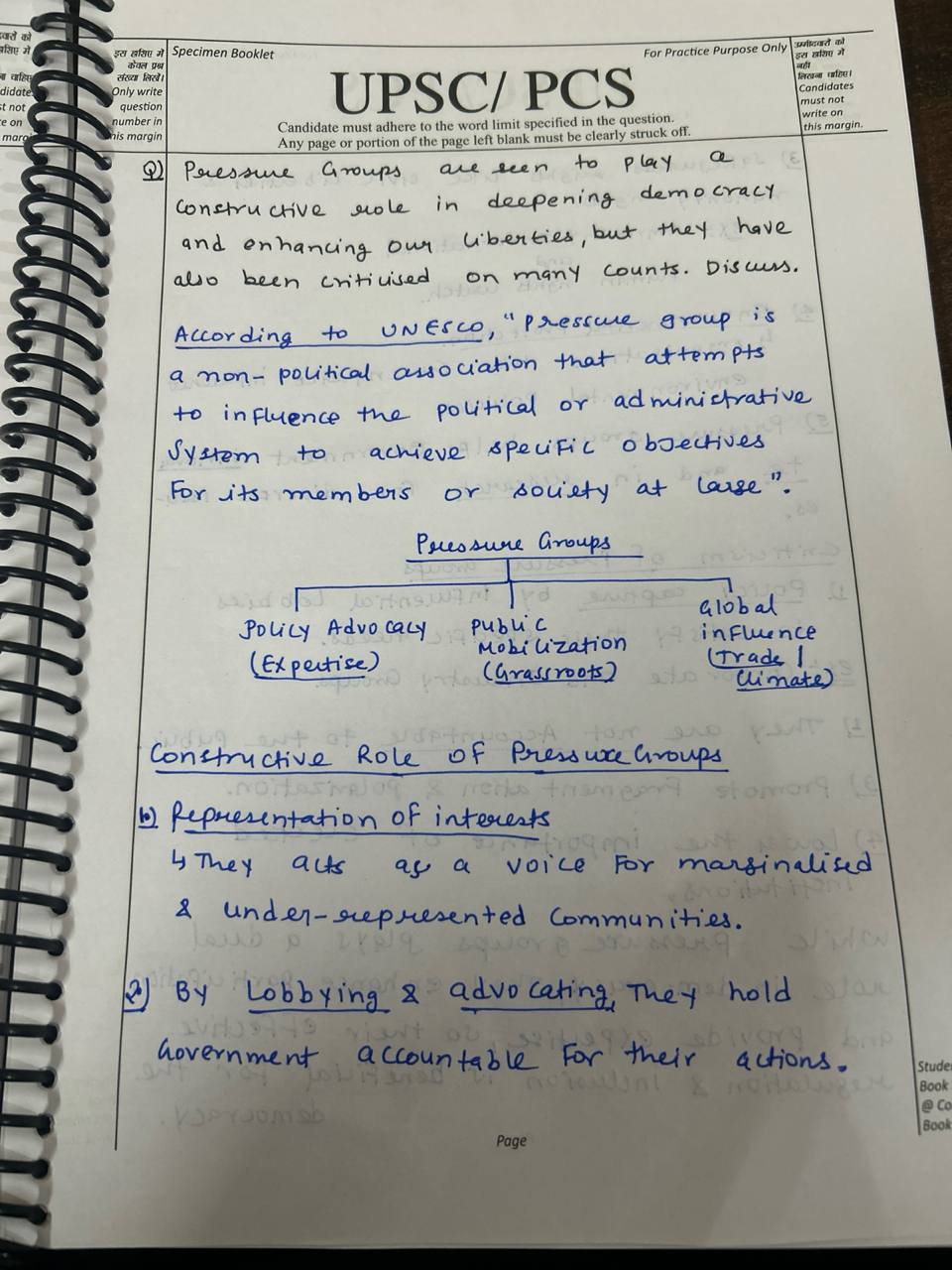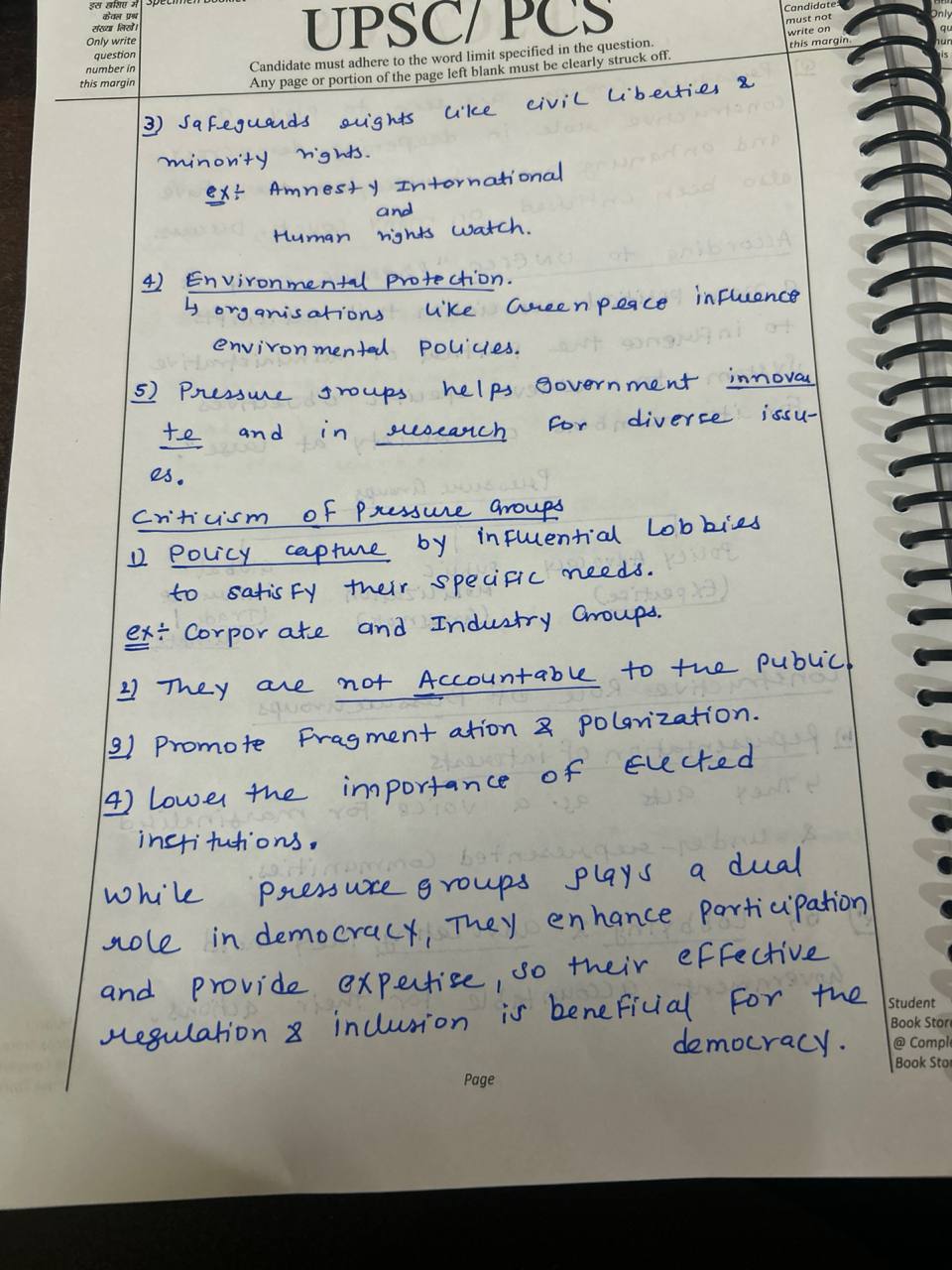Examine the formation and development of caste-based organizations within the Indian political system, including the Dalit movements and the Jat Reservation Agitation. Talk about their impact on social justice, identity politics, and the call for affirmative action.
Youth organizations in India, such as the Indian Youth Congress (IYC) and the Bharatiya Janata Yuva Morcha (BJYM), play a crucial role in mobilizing young voters, engaging in political activism, and shaping political discourse. These organizations serve as platforms for political engagement, advocacRead more
Youth organizations in India, such as the Indian Youth Congress (IYC) and the Bharatiya Janata Yuva Morcha (BJYM), play a crucial role in mobilizing young voters, engaging in political activism, and shaping political discourse. These organizations serve as platforms for political engagement, advocacy, and leadership development among the younger generation. Here’s an analysis of their roles and influences:
Indian Youth Congress (IYC)
Role and Objectives:
Mobilizing Young Voters: The IYC aims to mobilize young voters for the Indian National Congress (INC) by promoting voter registration, participation in elections, and political awareness among youth.
Political Activism: The organization engages in various forms of activism, including protests, campaigns, and advocacy on issues like education, employment, and social justice.
Leadership Development: IYC focuses on training and developing future leaders within the INC, providing young members with opportunities for leadership and involvement in political processes.
Influence:
Election Impact: The IYC’s efforts to mobilize young voters can influence election outcomes, particularly in terms of voter turnout and support for the INC. Its campaigns often focus on youth-centric issues, aiming to resonate with younger demographics.
Policy Advocacy: Through activism and campaigns, IYC advocates for policies that address youth concerns, such as job creation, affordable education, and social equality. This advocacy can impact the party’s policy positions and public discourse.
Shaping Discourse: The IYC contributes to shaping the political discourse by highlighting issues relevant to young people and pushing for reforms that align with their interests and needs.
Challenges:
Perception and Credibility: The IYC sometimes faces challenges related to its perceived effectiveness and the overall credibility of the INC among younger voters, especially when compared to newer political organizations.
Internal Dynamics: Like many political organizations, the IYC may struggle with internal conflicts and leadership challenges, which can affect its organizational cohesion and effectiveness.
Bharatiya Janata Yuva Morcha (BJYM)
Role and Objectives:
Mobilizing Young Support: The BJYM works to mobilize young voters for the Bharatiya Janata Party (BJP), focusing on building a strong base of youth support for the party through outreach and engagement.
Political Activism: The organization is involved in political activism, including campaigns, rallies, and social media outreach. It addresses issues such as nationalism, economic development, and youth empowerment.
Leadership Development: The BJYM provides training and leadership opportunities for young members, helping to develop future leaders within the BJP and prepare them for political roles.
Influence:
Election Influence: The BJYM plays a key role in the BJP’s electoral strategies, helping to energize and mobilize young voters. Its campaigns often focus on nationalistic themes and economic growth, which can sway voter sentiment.
Policy Focus: The BJYM’s advocacy often reflects the BJP’s policy priorities, such as economic development, national security, and cultural issues. Its activities can influence the party’s policy agenda and public messaging.
Public Discourse: The BJYM shapes public discourse by promoting issues important to the BJP’s platform and engaging in debates on national and local issues. Its active presence in social media also contributes to shaping online discourse.
Challenges:
Ideological Polarization: The BJYM, with its strong alignment with the BJP’s ideological positions, can face challenges related to ideological polarization and opposition from youth with differing viewpoints.
Perception of Authenticity: There can be concerns about the authenticity of the BJYM’s engagement with youth issues, particularly if the organization is perceived as primarily a political tool rather than a genuine advocate for youth concerns.
Conclusion
Both the Indian Youth Congress and the Bharatiya Janata Yuva Morcha play significant roles in engaging young voters and shaping political discourse:
IYC focuses on mobilizing youth for the Indian National Congress and advocating for policies relevant to young people, though it faces challenges related to its perceived effectiveness and internal dynamics.
BJYM works to build support for the BJP, emphasizing nationalism and economic development, but must navigate challenges related to ideological polarization and perceptions of authenticity.
Their influence on political activism and discourse is substantial, as they contribute to shaping the political landscape by addressing youth concerns, mobilizing support, and advocating for specific policy agendas.



The emergence and evolution of caste-based associations in India, such as the Dalit movements and the Jat Reservation Agitation, have played a significant role in shaping the Indian political landscape. These movements have influenced identity politics, social justice, and the demand for affirmativeRead more
The emergence and evolution of caste-based associations in India, such as the Dalit movements and the Jat Reservation Agitation, have played a significant role in shaping the Indian political landscape. These movements have influenced identity politics, social justice, and the demand for affirmative action in various ways.
Dalit Movements
1. Historical Context:
Colonial Era: The Dalit movements can be traced back to the colonial era when British administrators documented the deep-rooted caste inequalities in Indian society. Reformers like Jyotirao Phule and B.R. Ambedkar began challenging these inequalities.
Post-Independence: After independence in 1947, the Indian Constitution, drafted under Ambedkar’s leadership, abolished untouchability and aimed to promote social justice.
2. Key Movements and Figures:
Ambedkarite Movement: B.R. Ambedkar, a key figure in Dalit politics, advocated for the rights of Dalits and worked towards their upliftment. His efforts led to the formation of the Scheduled Castes Federation and later the Republican Party of India.
Contemporary Movements: In recent decades, organizations like the Dalit Panthers and various NGOs have continued to fight for Dalit rights, focusing on issues such as caste-based violence, discrimination, and socio-economic upliftment.
3. Influence on Identity Politics:
The Dalit movement has been instrumental in fostering a sense of identity among Dalits, highlighting the intersection of caste and social justice.
It has challenged mainstream narratives and policies, pushing for greater representation and recognition of Dalit issues in political discourse.
4. Influence on Social Justice and Affirmative Action:
The movement has led to the implementation of affirmative action policies, including reservations in education, employment, and political representation.
Despite these measures, challenges remain, including disparities in educational attainment and economic status.
Jat Reservation Agitation
1. Historical Context:
Socio-Economic Changes: The Jat community, traditionally an agrarian group, sought reservation benefits to improve their socio-economic status amidst growing economic and educational disparities.
2. Key Agitations:
2016 Jat Reservation Agitation: One of the most notable agitations occurred in Haryana in 2016, where Jat leaders demanded inclusion in the Other Backward Classes (OBC) category for reservation in government jobs and educational institutions.
Violence and Protests: The agitation led to widespread violence, property damage, and significant disruption in the state, highlighting the intense demand for affirmative action among different caste groups.
3. Influence on Identity Politics:
The Jat Reservation Agitation reflects the complexity of identity politics in India, where even relatively privileged communities seek affirmative action based on perceived socio-economic disadvantages.
It underscores the fluidity of caste-based identities and the shifting nature of political demands.
4. Influence on Social Justice and Affirmative Action:
The agitation intensified debates on the criteria for affirmative action and the need for a more nuanced approach to reservation policies.
See lessIt also demonstrated the growing demand for reservation among various groups, prompting discussions on balancing social justice with merit-based considerations.
Conclusion
Caste-based associations and movements in India have significantly impacted identity politics and social justice. They have pushed the boundaries of affirmative action, highlighting the need for ongoing dialogue and reform. While they have succeeded in bringing caste issues to the forefront of political discourse, the challenges of ensuring equitable implementation and addressing evolving socio-economic needs continue to shape the Indian political landscape.